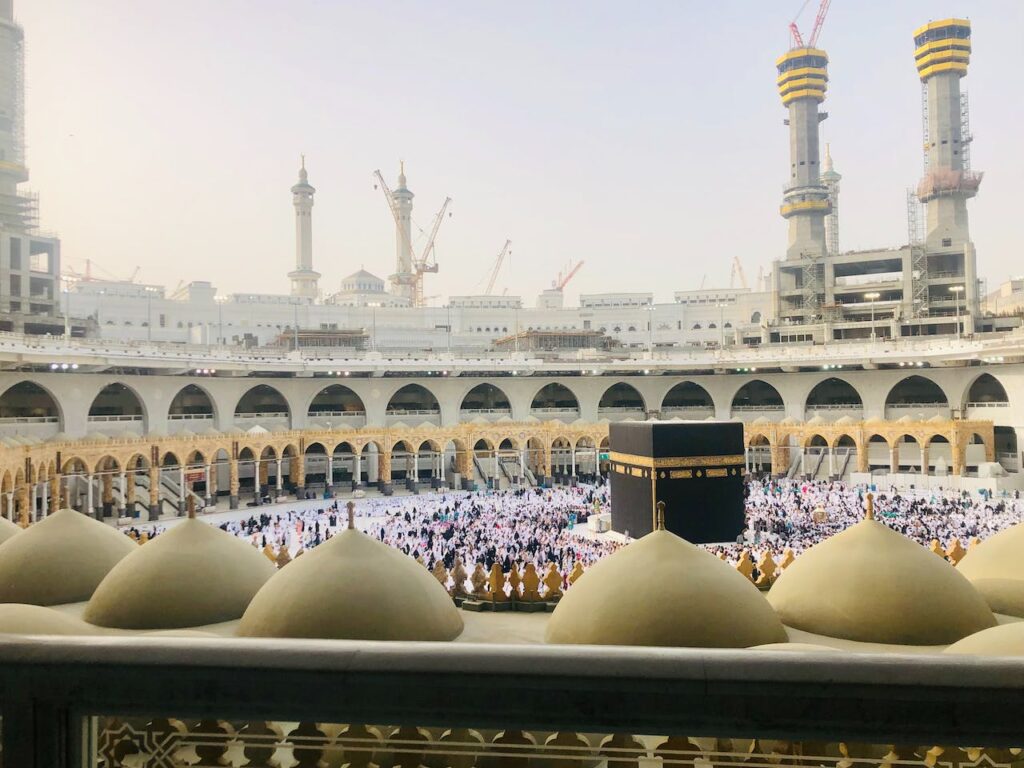Sa’i, the act of walking between Safa and Marwa in the Grand Mosque of Mecca, holds immense religious significance for pilgrims performing Umrah and Hajj. However, there are specific prohibitions and restrictions that pilgrims must observe during this sacred ritual. In this article, we will explore the Sa’i prohibitions and the importance of respecting the boundaries set forth during this spiritual journey.
Sa’i Prohibitions
To preserve the sanctity and integrity of this sacred rite, specific prohibitions, and restrictions have been established. These guidelines ensure that pilgrims approach Sa’i with reverence, humility, and adherence to the principles of the faith:
-
Upholding Reverence and Piety
One of the foremost prohibitions during Sa’i is the need to maintain a sense of reverence and piety. Pilgrims are expected to conduct themselves in a respectful and modest manner, showing deep respect for the holy sites they visit. This entails refraining from engaging in any behavior that is indecent, disrespectful, or disruptive to others. By embodying a sense of humility and devotion,
pilgrims can enhance the spiritual experience of Sa’i and foster an atmosphere of tranquility and devotion.
-
Ensuring Safety and Well-being
The safety and well-being of all pilgrims is of utmost importance during Sa’i. To ensure a secure environment, it is crucial to avoid any activities that may endanger oneself or others. Pilgrims should refrain from running or engaging in forceful pushing or shoving, particularly in crowded areas. It is essential to exercise patience, maintaining a steady and calm pace throughout the ritual. By adhering to these restrictions, pilgrims can prevent accidents and injuries, creating a harmonious and secure environment for all.
-
Respecting Designated Timeframes
Sa’i is conducted within specific timeframes established by the authorities responsible for managing the holy sites. Pilgrims must adhere to these allocated time slots and follow the instructions provided. This ensures the smooth flow of pilgrims and prevents overcrowding or congestion. By respecting the designated timeframes, individuals can contribute to the orderly progression of the Sa’i ritual, allowing everyone to engage in the spiritual journey without unnecessary delays or disruptions.
-
Avoiding the Use of Mobile Phones and Photography
During Sa’i, it is recommended to minimize distractions and focus on the act of worship. Therefore, the use of mobile phones should be avoided, as it can divert attention away from the spiritual experience. Additionally, photography is discouraged to maintain the sanctity and solemnity of the ritual. Pilgrims are encouraged to immerse themselves fully in the spiritual significance of Sa’i, avoiding any activities that may detract from the reverence and concentration required.
-
Respecting Sacred Boundaries
Pilgrims must always respect the boundaries and designated areas for Sa’i. Deviating from the established path or crossing into restricted zones is strictly prohibited. These boundaries are in place to maintain order, facilitate the movement of pilgrims, and preserve the integrity of the ritual. Respecting these sacred boundaries demonstrates obedience and reverence for the established rules and regulations governing Sa’i.
Takeaways
- Respecting the prohibitions and restrictions during Sa’i is crucial for pilgrims undertaking the sacred journey of Umrah or Hajj.
- By upholding reverence, ensuring safety, following designated timeframes, avoiding distractions, and honoring sacred boundaries, pilgrims can enhance the spiritual significance of Sa’i and contribute to a meaningful and harmonious pilgrimage experience.
- These guidelines serve as a reminder of the importance of maintaining a humble and respectful attitude while engaging in this sacred ritual, allowing pilgrims to fully immerse themselves in the spiritual journey and deepen their connection with the divine.
The Importance of Sa’i Prohibitions
The Sa’i prohibitions play a crucial role in fostering a profound spiritual connection for pilgrims undertaking the journey of Umrah or Hajj. for example:
- By refraining from indecent or disrespectful behavior, pilgrims create an atmosphere of humility and respect.
- Through their actions, pilgrims demonstrate their commitment to fulfilling this sacred duty and seek to purify their hearts and minds during Sa’i.
- The prohibitions against distractions such as mobile phones and photography help pilgrims maintain focus on the spiritual journey at hand.
- The Sa’i prohibitions promote a sense of unity and brotherhood among pilgrims.
- By adhering to these restrictions, pilgrims demonstrate their willingness to submit to the divine commands and follow the prescribed manner of worship.
Conclusion
In conclusion, Observing the Sa’i prohibitions is essential for pilgrims undertaking the sacred journey of Umrah or Hajj. By upholding reverence and piety, ensuring safety, respecting designated timeframes, avoiding distractions, and honoring sacred boundaries, pilgrims can enhance the spiritual significance of Sa’i and contribute to a meaningful and harmonious pilgrimage experience.






